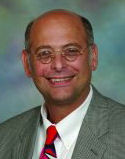A lesson in serendipity
Sometimes after a hard morning of rounding, I hide in my office and distract myself by reading a tome from the past.
Staring at my bookshelf after a morning on service, my eyes were drawn to “The Retrospect of Practical Medicine and Surgery,” a musty volume from 1860. Sometimes after a hard morning of rounding, I hide in my office and distract myself by reading a tome from the past. It gives my mind time to process the patients I have seen—the unexplained fever, the urinary retention, the stage 4 pressure ulcers, the persistent seizures. I pulled the book off my shelf. For years I'd been meaning to thumb through it.
Now, I am a firm believer in serendipity. If there's a journal lying on your desk and a gut feeling keeps you from throwing it away, it's sure to contain an article with implications for one of your patients. On this day, I was also cogitating over a topic for this column, and hoped there might be something inside the book for me to write about.

A side note: The word “serendipity” was coined by Horace Walpole in 1754. It comes from “Serendip,” a former name for Sri Lanka, as referenced in the Persian fairy tale “The Three Princes of Serendip.” Though Walpole used the term in describing a “silly fairy tale about princes who make discoveries by accident and sagacity,” the actual tale gives another message. These princes were more like Sherlock Holmes, using deduction based on scant and seemingly unrelated observations to draw a conclusion.
In the original tale, the princes see the tracks of a camel, and deduce it's lame, blind in one eye, missing a tooth, carrying a pregnant woman and bearing honey on one side and butter on the other. How did they know? Well, the grass was chewed on the less plentiful side of the road, indicating blindness to the other side. Clumps were left behind, indicating a missing tooth. The pattern of the camel tracks suggested a dragged leg. There were ants near the tracks in a pool of melted butter, and flies around a patch of honey. The pregnant woman was deduced by noticing a pool of human urine, and a pattern of small hand- and footprints that indicated a woman had used her hands to stand up after voiding.
I opened the old book. Were serendipitous words of wisdom contained in this 150-year-old tome? I read first about fever. Dr. William Addison (no, not that Addison) started with the assumption that fever is the expression of disorder in the corpuscles of the blood. Since the corpuscles derive the materials of their growth from the atmosphere and the plasma, fever must be due to disorder from these sources, he reasoned. One type he termed hectic fever, produced by the effects of a local disease (for example, suppuration of a lung or necrosis of a bone) on the plasma. To show that a local disease may produce changes in the blood plasma, he described an experiment in which the rate of agglutination of the red corpuscles seen in the capillaries of a frog's foot is correlated to induced inflammation. This was sounding a lot like a sedimentation rate. Maybe this was the moment of serendipity, I thought—one of my patients might have a hectic fever.
Next I read several articles by Dr. Brown-Séquard (yes, that Brown-Séquard, as in spinal hemiparaplegia). In the first, he discussed the cause and cures for epilepsy. For patients who have seizures induced by touching certain areas of the skin, one suggestion was to cauterize that area of the skin. For other epileptics, therapy suggestions included belladonna and zinc oxide, or removing a possible alternate source: worms in the intestine or urinary calculi. I was prepared for the next patient admitted to me with seizures, but this didn't apply to anyone today.
Dr Brown-Séquard also wrote about sloughing bed sores in paraplegics. His approach was preventive: using alternating hot poultices and ice to restore the circulation, then applying galvanic current if the heat/cold treatment failed. Bedsores in paraplegics? This was a useful topic, but I was doubtful I could get IRB approval for a galvanic current trial.
I read on. I learned about the treatment of rheumatic fever, the diagnosis and treatment of heart disease, uses of belladonna for incontinence, the formation of the artificial anus (the colostomy), the treatment of lupus and scabies, the uses of the hypodermic needle for instilling narcotics and the dangers of overdosage, the use of subcutaneous injection, and how to remove rings from swollen fingers.
And so it seemed that my serendipitous meal wagon had come up short. The conditions I faced on the ward today were the same as 150 years ago; the only difference was my mental, pharmacologic, and technical toolbox. This older information was interesting, but not mind-blowing.
But then I turned to the second section of the book. The first article I saw was “On the Condition of the Heart in Typhus Fever,” by Dr. Joseph Bell. Dr. Joseph Bell! This was the physician upon whom Sherlock Holmes was based. I had gone looking for some serendipity upon which to base my column, and was led instead to the man who embodies the original meaning of the word. It was a lesson in serendipity that was a bit…serendipitous, after all.



